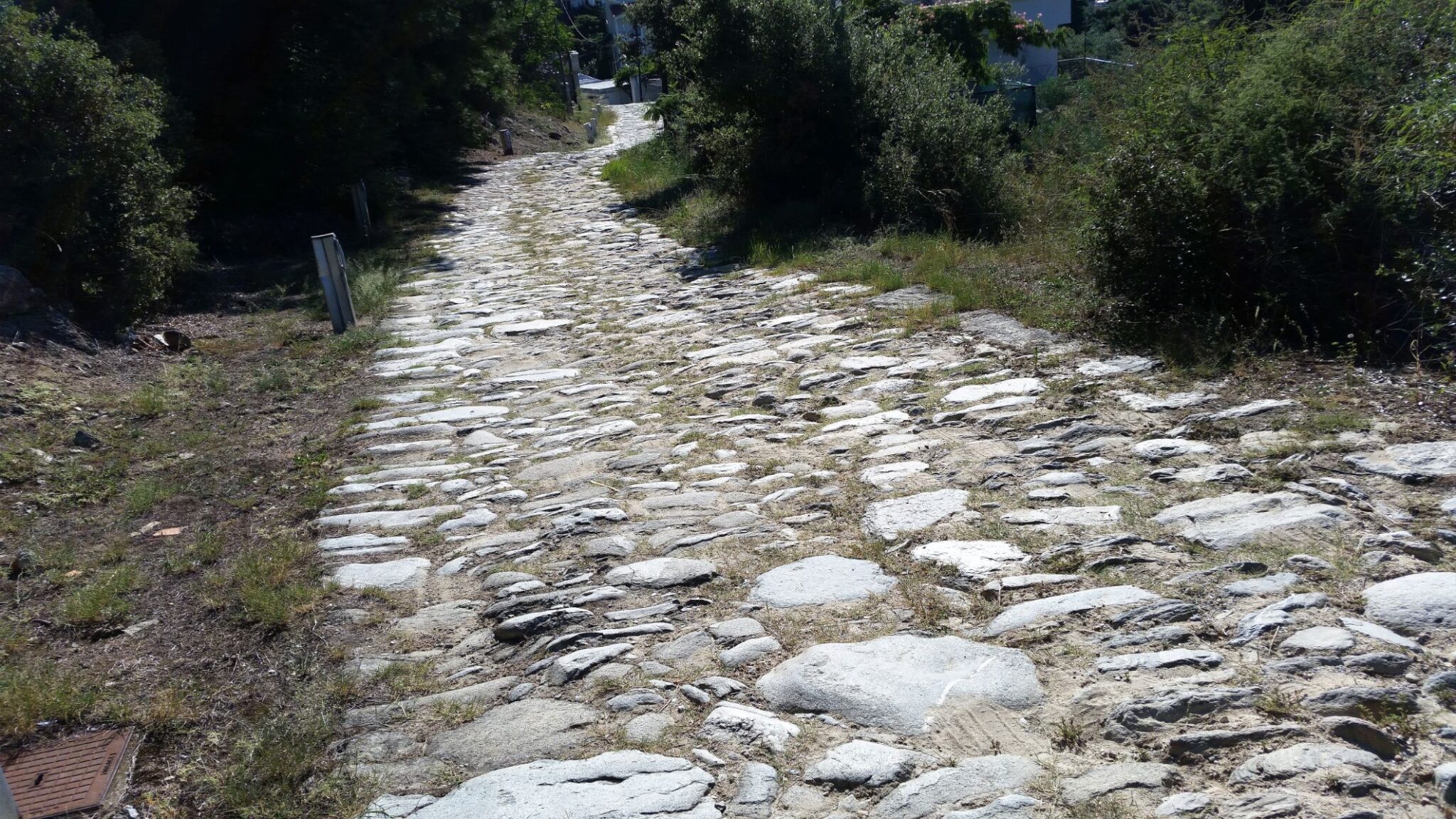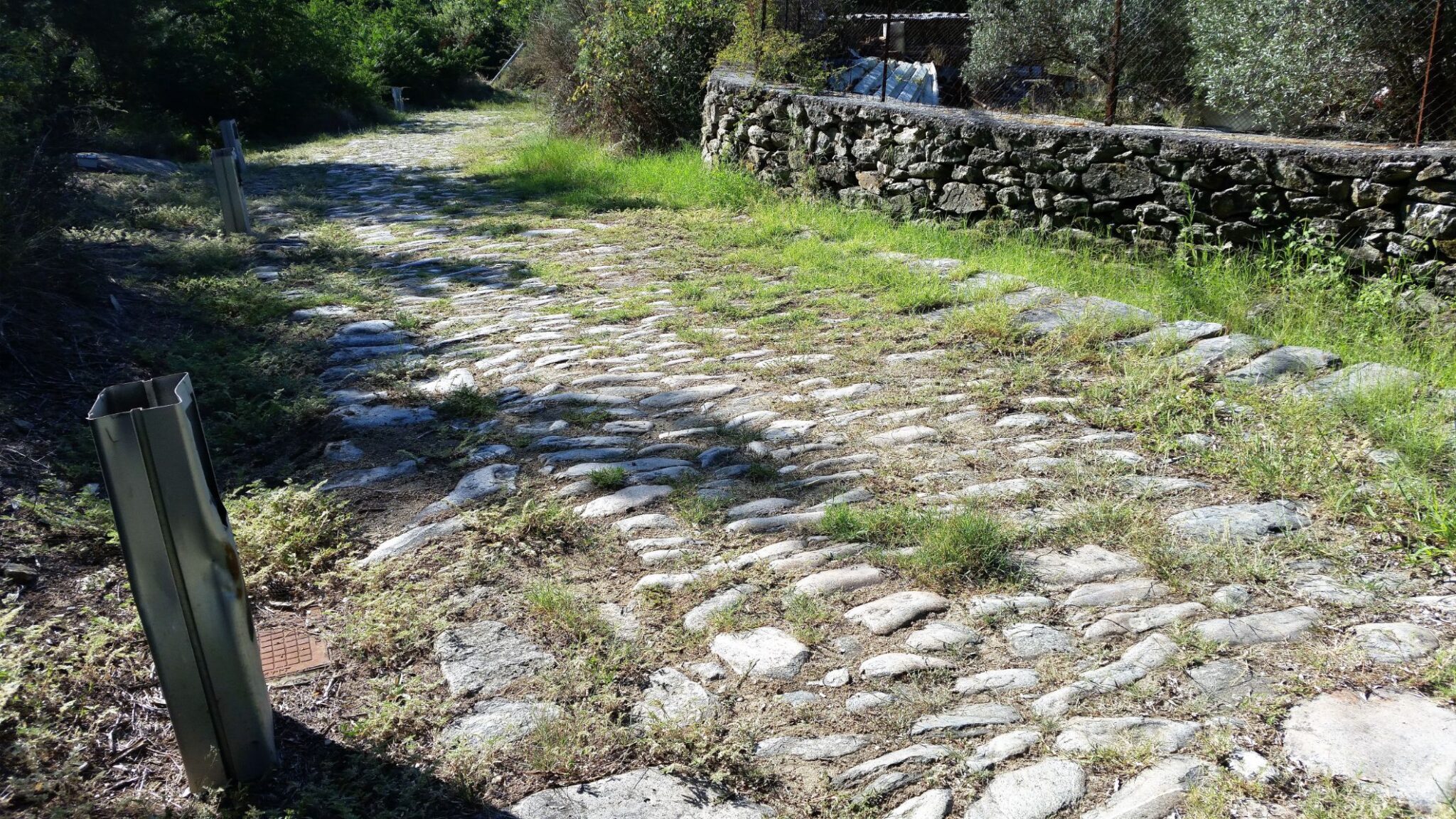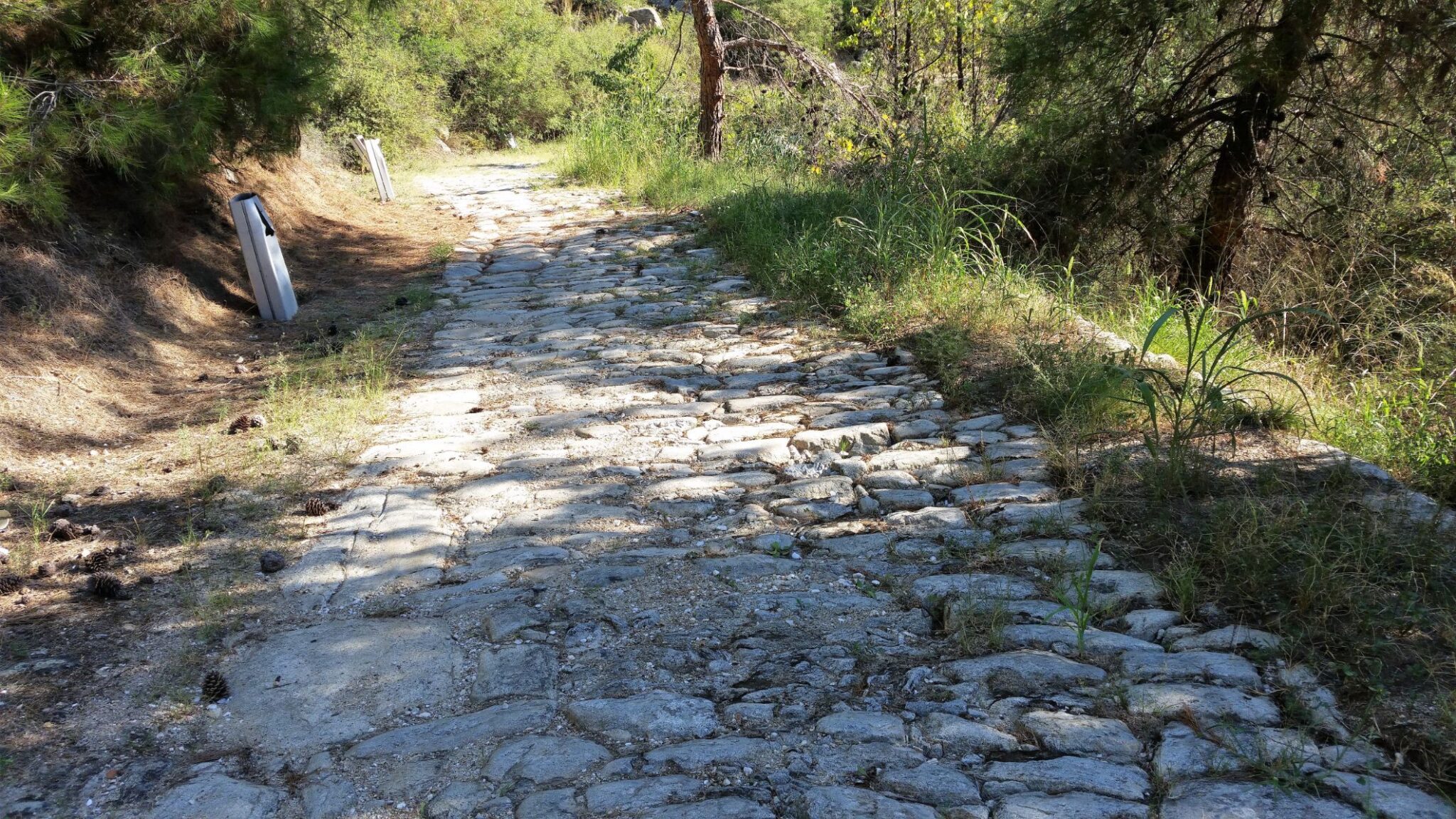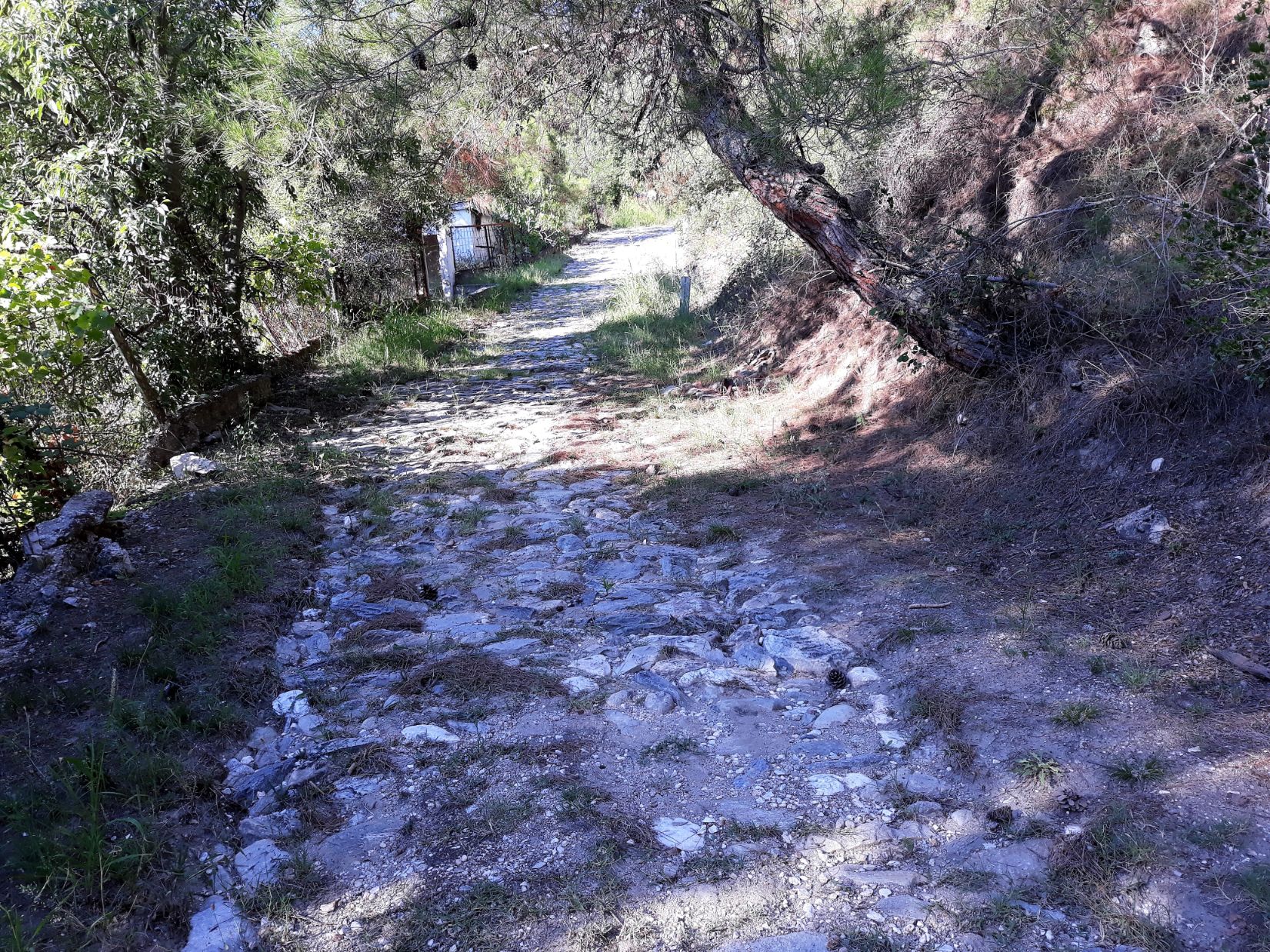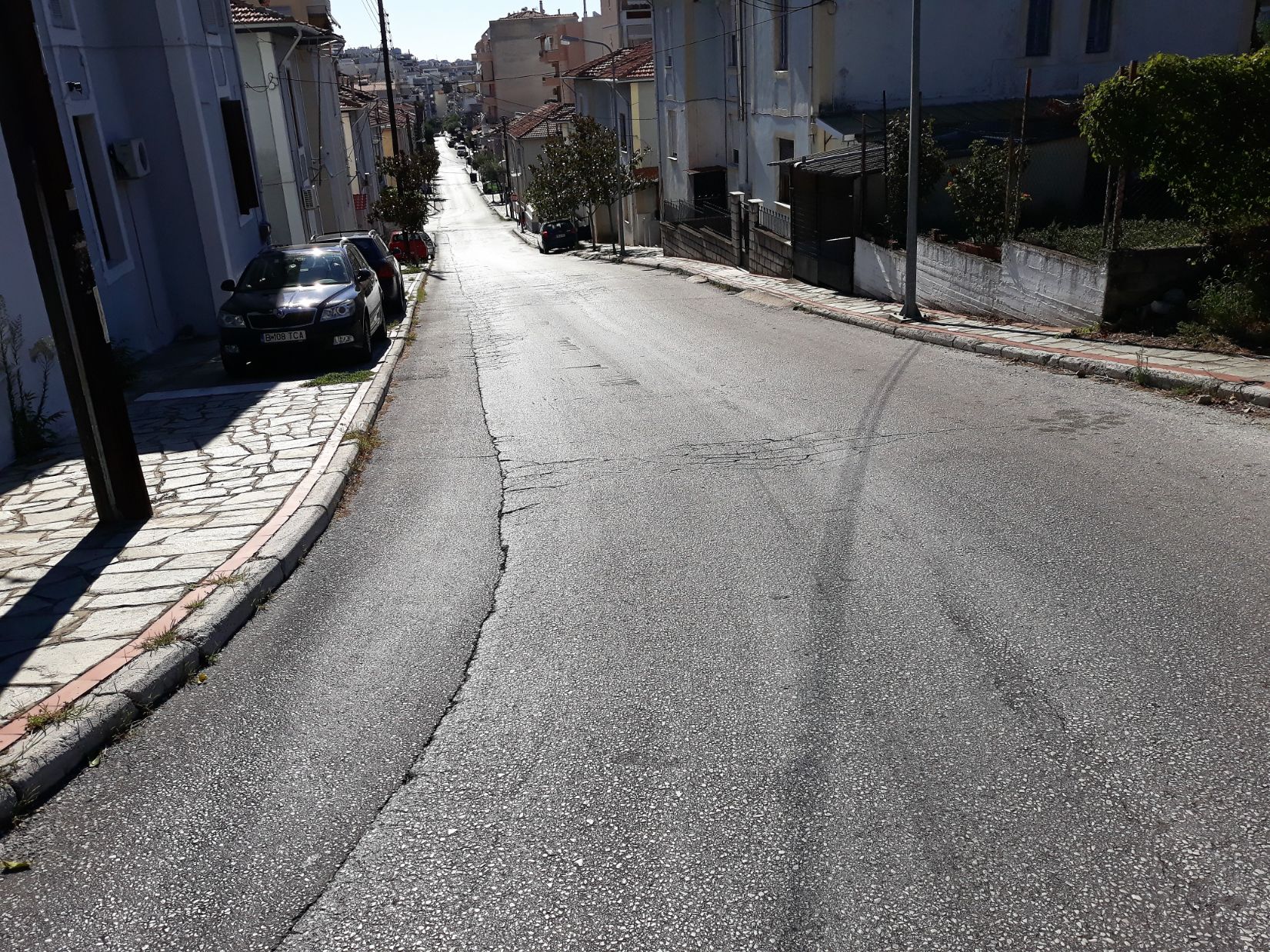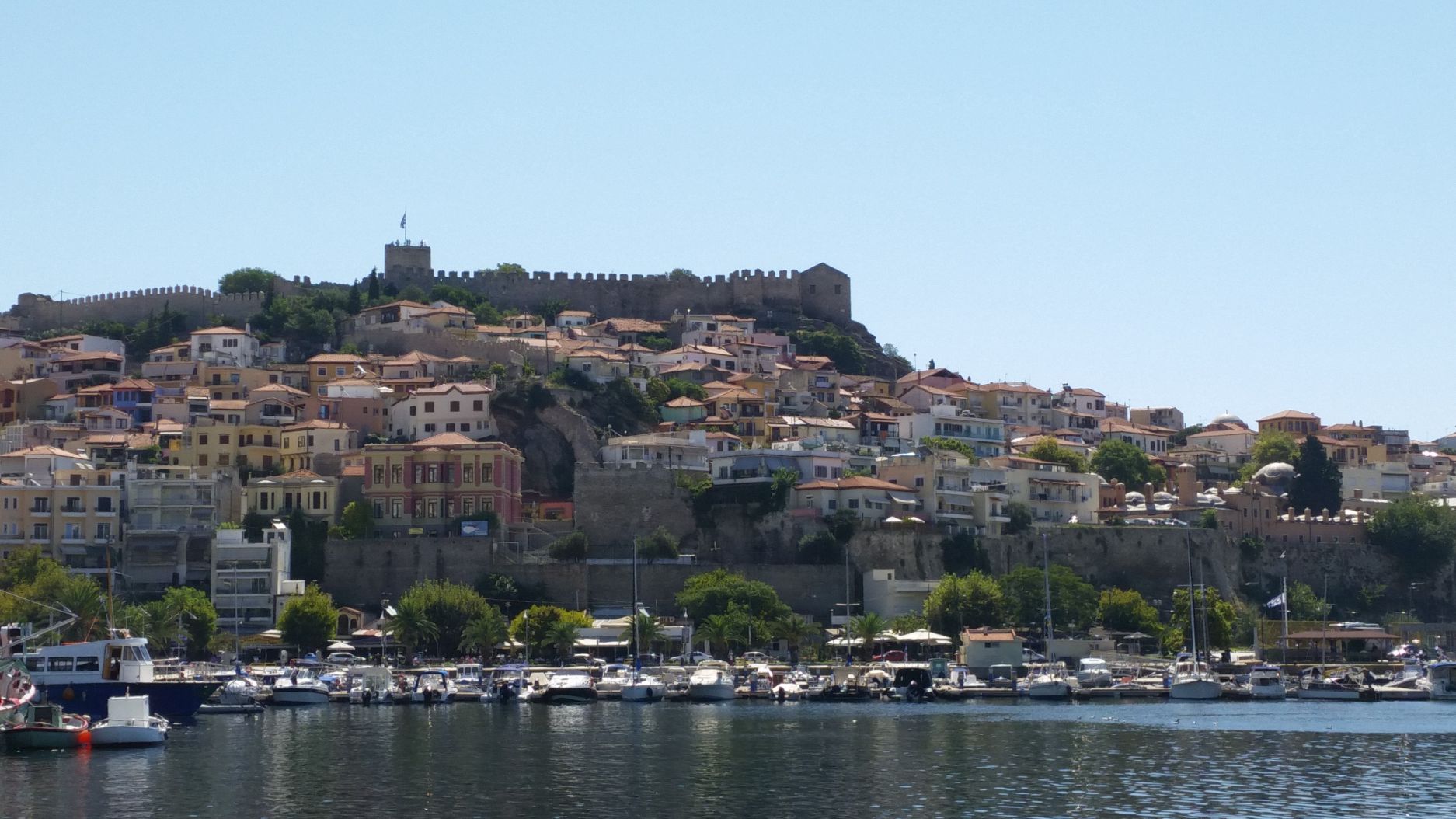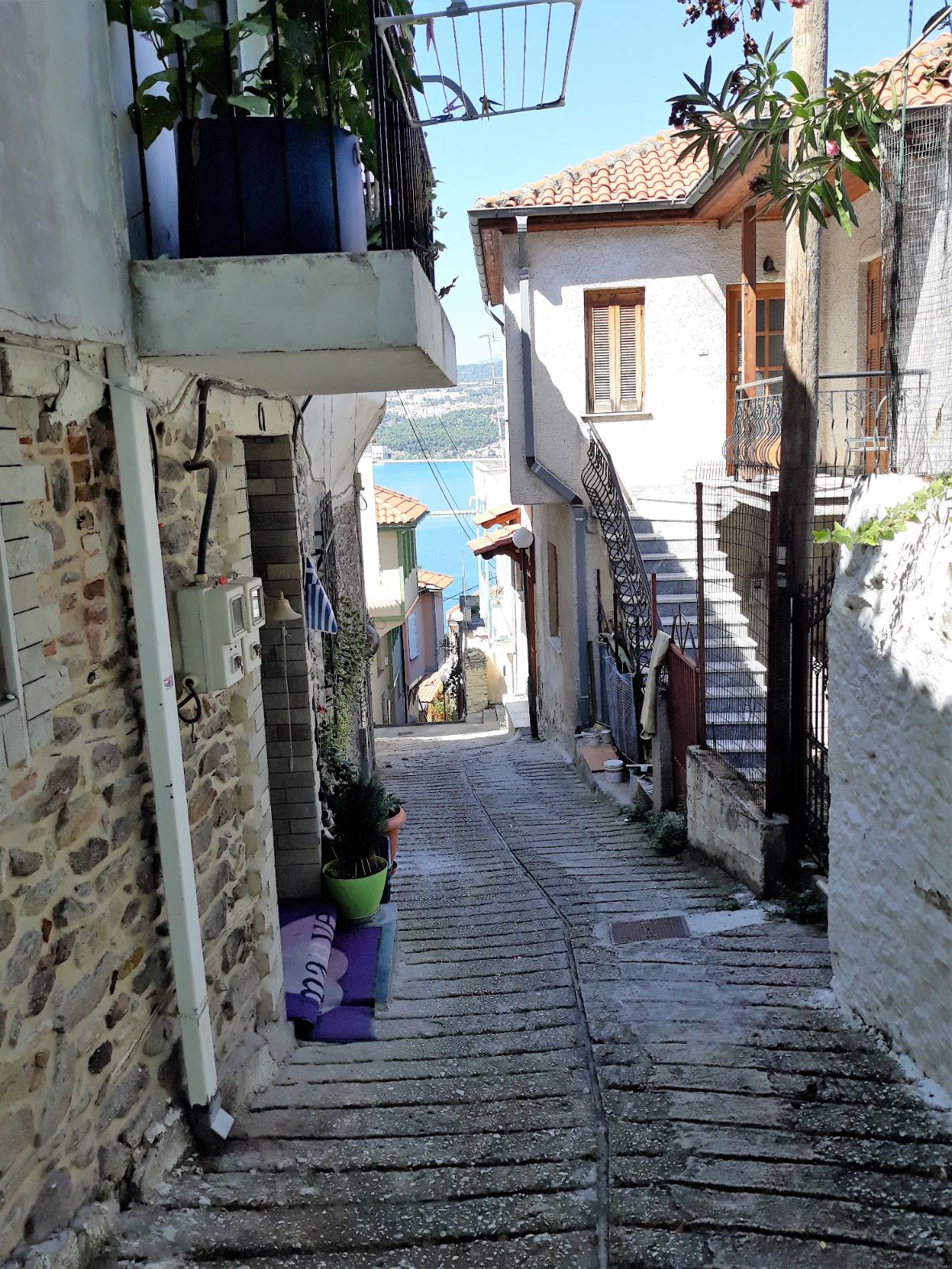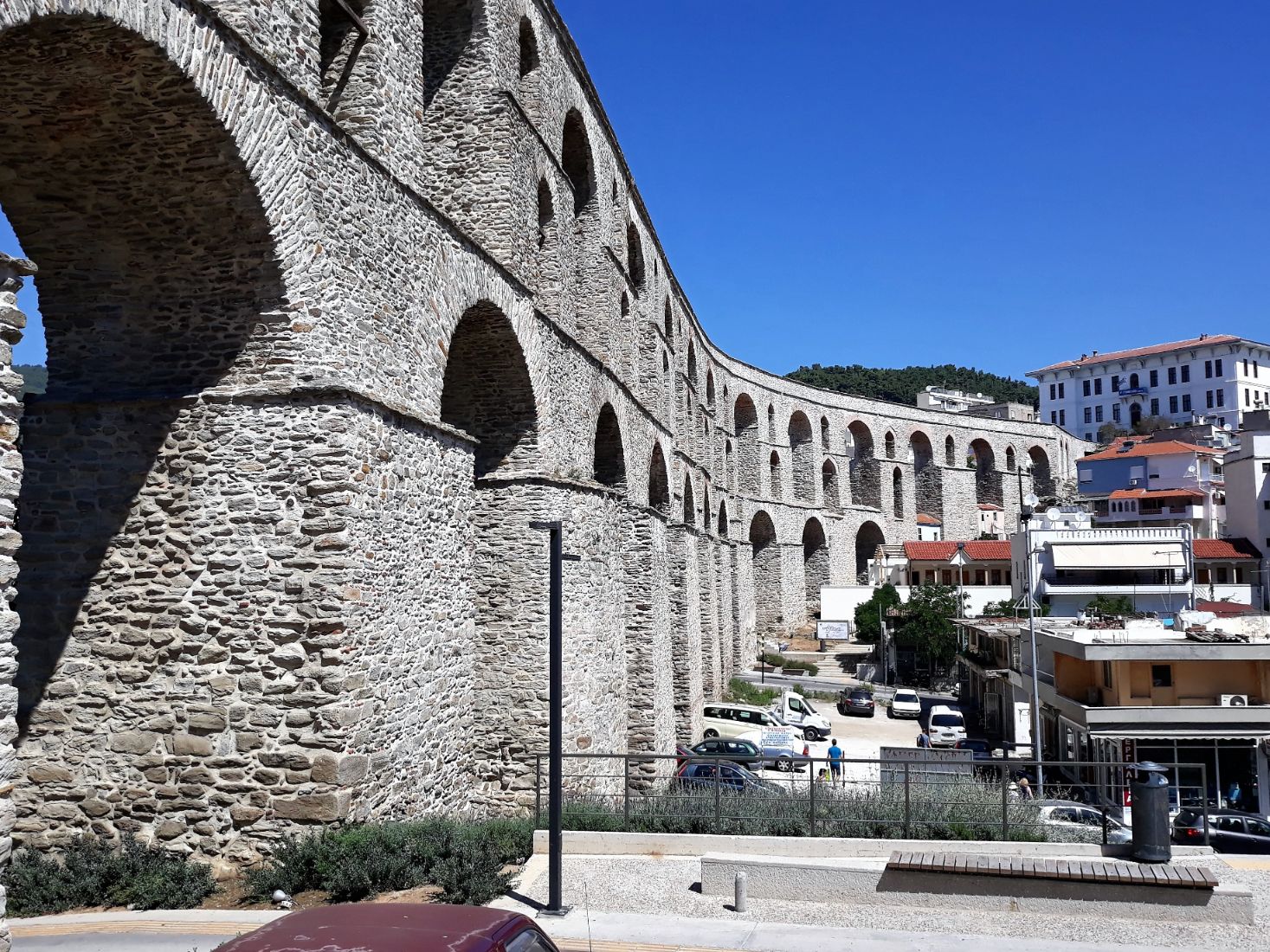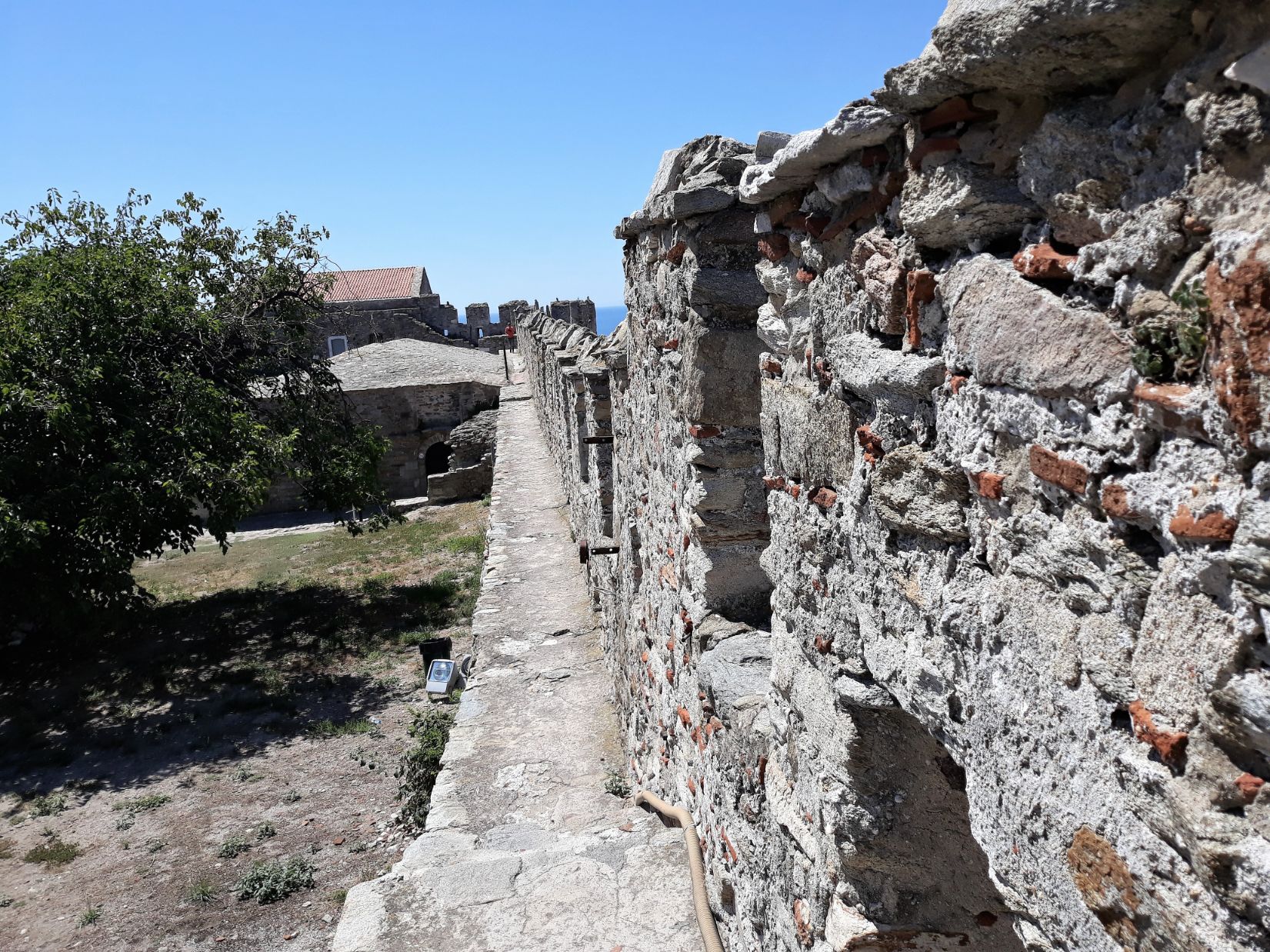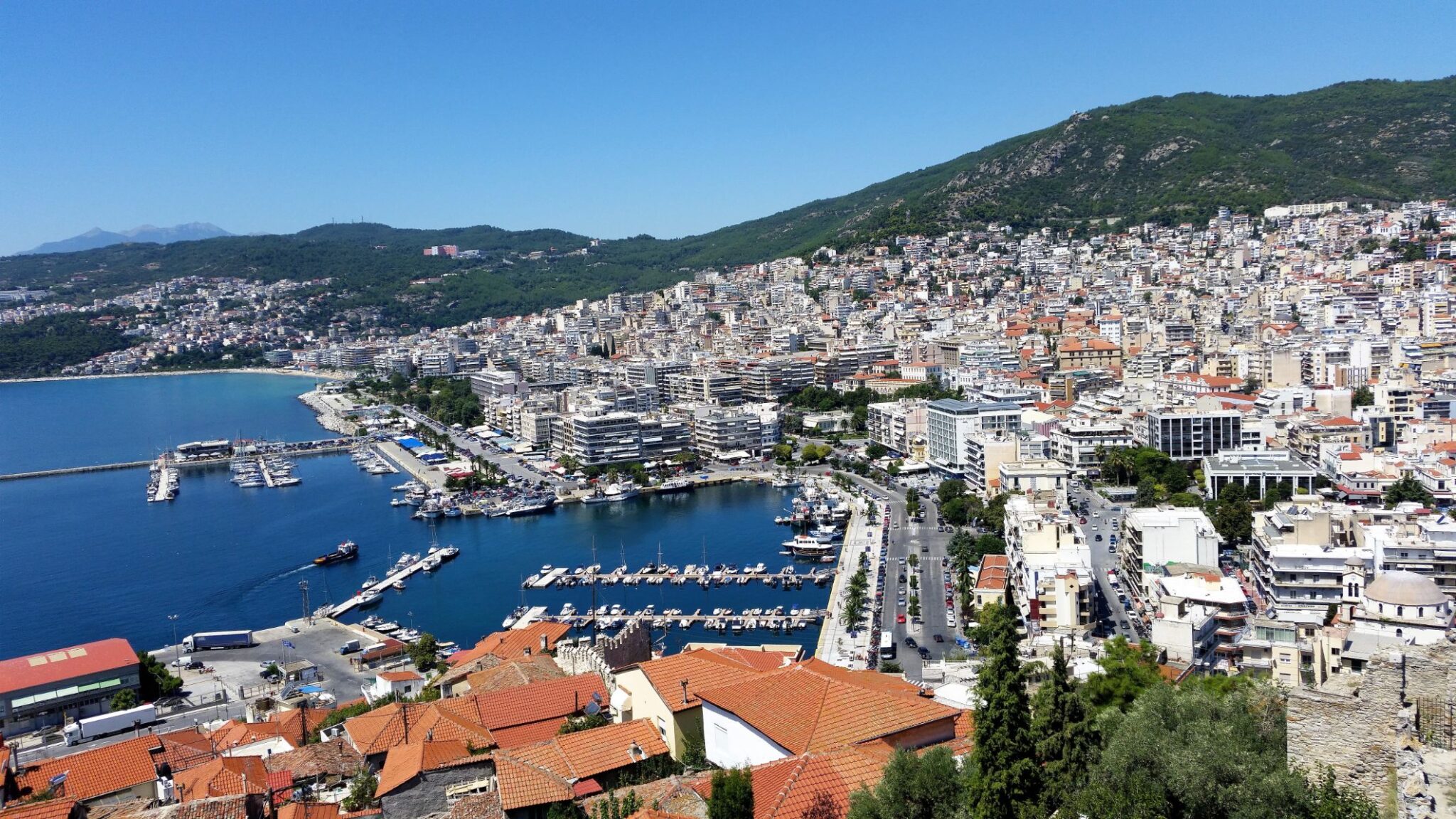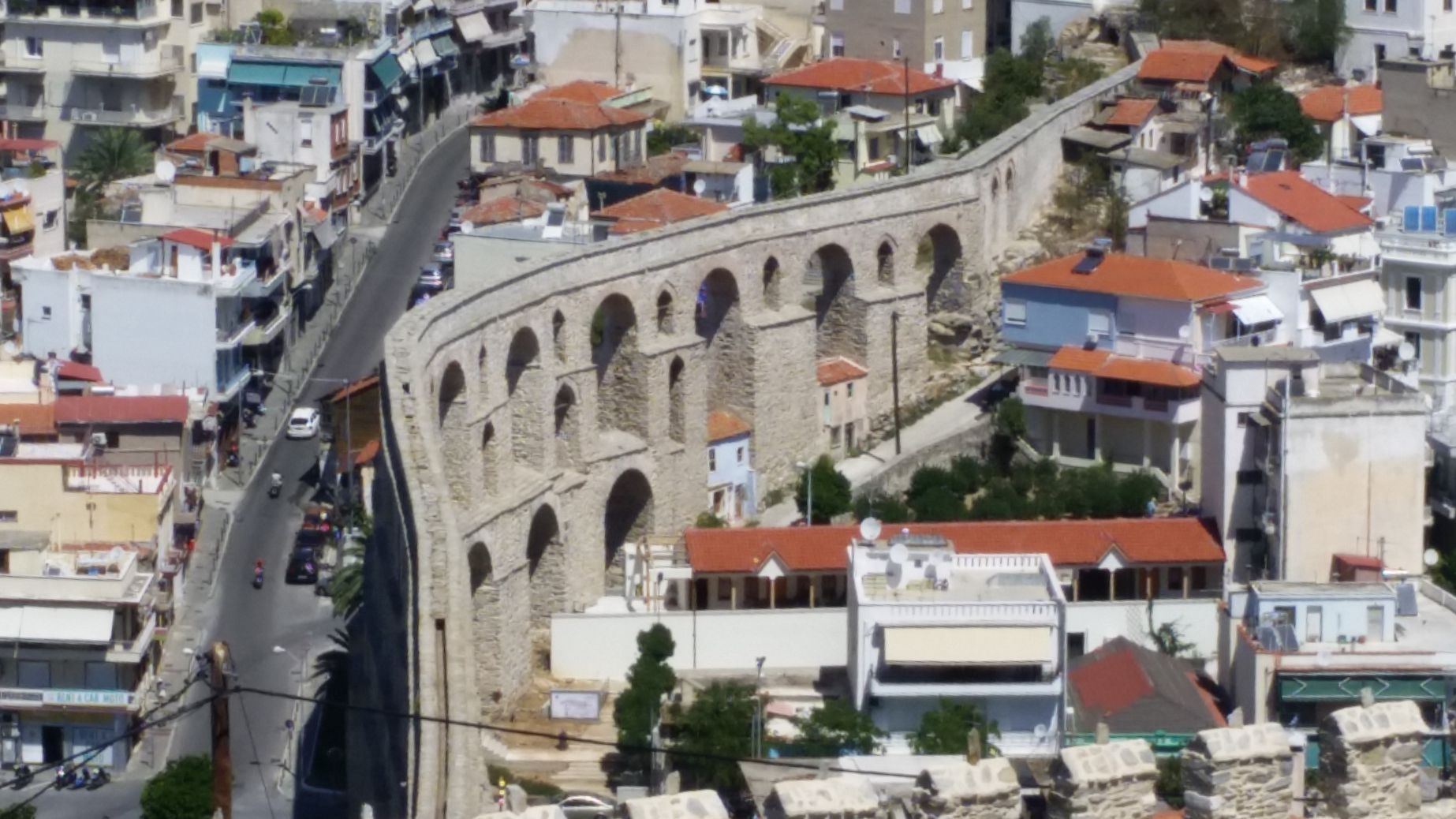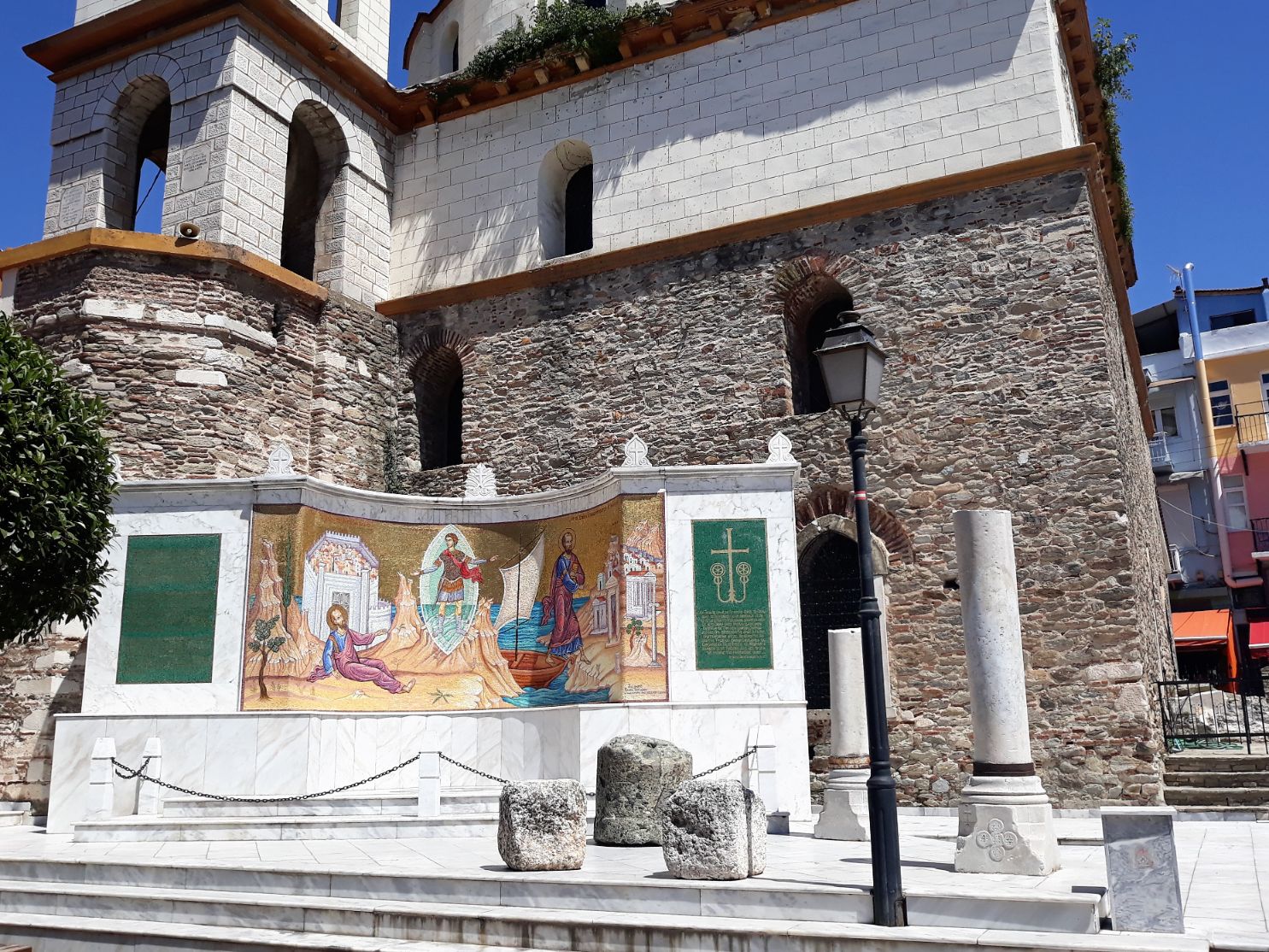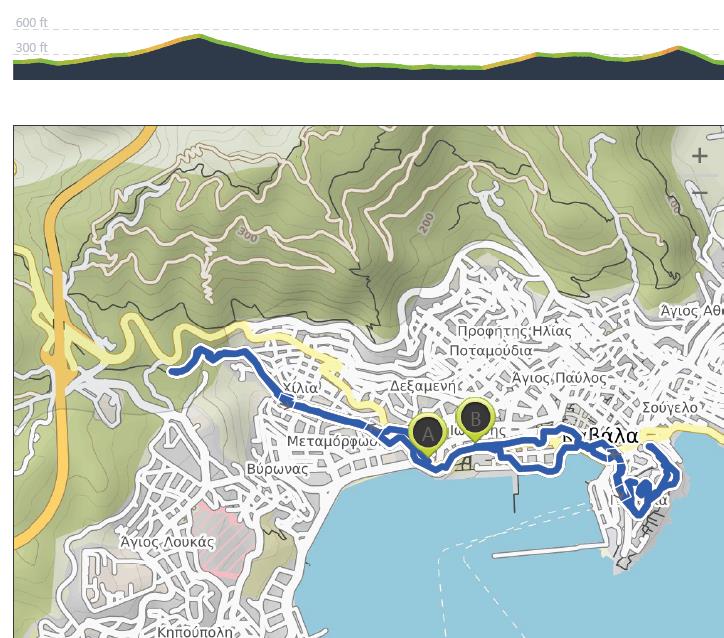Kavala Via Egnatia and Old Town – August 13th
Distance: 9.26 km – Elevation +230 m -230 m
Weather: Sunny. Temperature: High 35 degrees
I have walked 100 miles in the past five days and I have decided to take a day of rest and explore the history of Kavala.
On the outskirts of the town I found the ĺongest stretch of the Via Egnatia, in its original form, on the whole journey so far. 1100 metres in total. I climbed to the top of the hill where the section starts. It is the road from Philippi, and I walked the whole section thinking about pilgrims that have walked on this same path for the past 2000 years. I felt God’s presence and a real sense of purpose for my journey ahead.
On the way up I met an elderly man clearing away the glass from a smashed bottle in a seating area, he visually indicated that those responsible needed their head examined. On my way down I met him again and he beckoned me over and gave me some fresh figs from a tree outside his home ( the only property on this stretch of the Via Egnatia), and without a word of English from him, and without a word of Greek from me, I learnt that he was born in his home, that he was eighty years of age and that the fig tree was planted when he was 5 years of age and so they had grown old together. He cares a lot also for this section of the Via Egnatia.
I have included a couple of photos of the modern-day continuation of the old section, it is simply called Egnatias. I was also fascinated by the construction detail of the old road to ensure the stones stayed in place on a steep slope.
Later I climbed to the old walled city, parts of which date back to Hellenic times, it is known as the Acropolis of Kavala. It was a long climb but I was rewarded with spectacular views from the battlements. The other magnificent structure is the Aqueduct of Kavala which has its origins in Roman times. The existing structure was built in the 16th century during the reign of Sultan Suleiman the Magnificent.
After the visit to the old city I went to the Holy Church of Saint Nikolaos. In the year 2000 AD a mosaic monument was erected outside the Holy Church of Saint Nikolaos on the spot where the Apostle Paul landed. The church was originally built as a mosque in the 16th century, which was built over the remains of an early Christian basilica
During his journey through Asia Minor in AD 49-50, the Apostle Paul saw a vision of a Macedonian man standing and pleading with him: “Come to Macedonia and help us” (Acts 16, 9). After the vision Paul sailed from Troas with his companions the Apostles Silas, Timothy and Luke the Evangelist, to Neapolis (Kavala). From Kavala they followed the Via Egnatia to Philippi and it is there that he baptized Lydia, the very first European Christian – a momentous moment in the history of Christianity.
